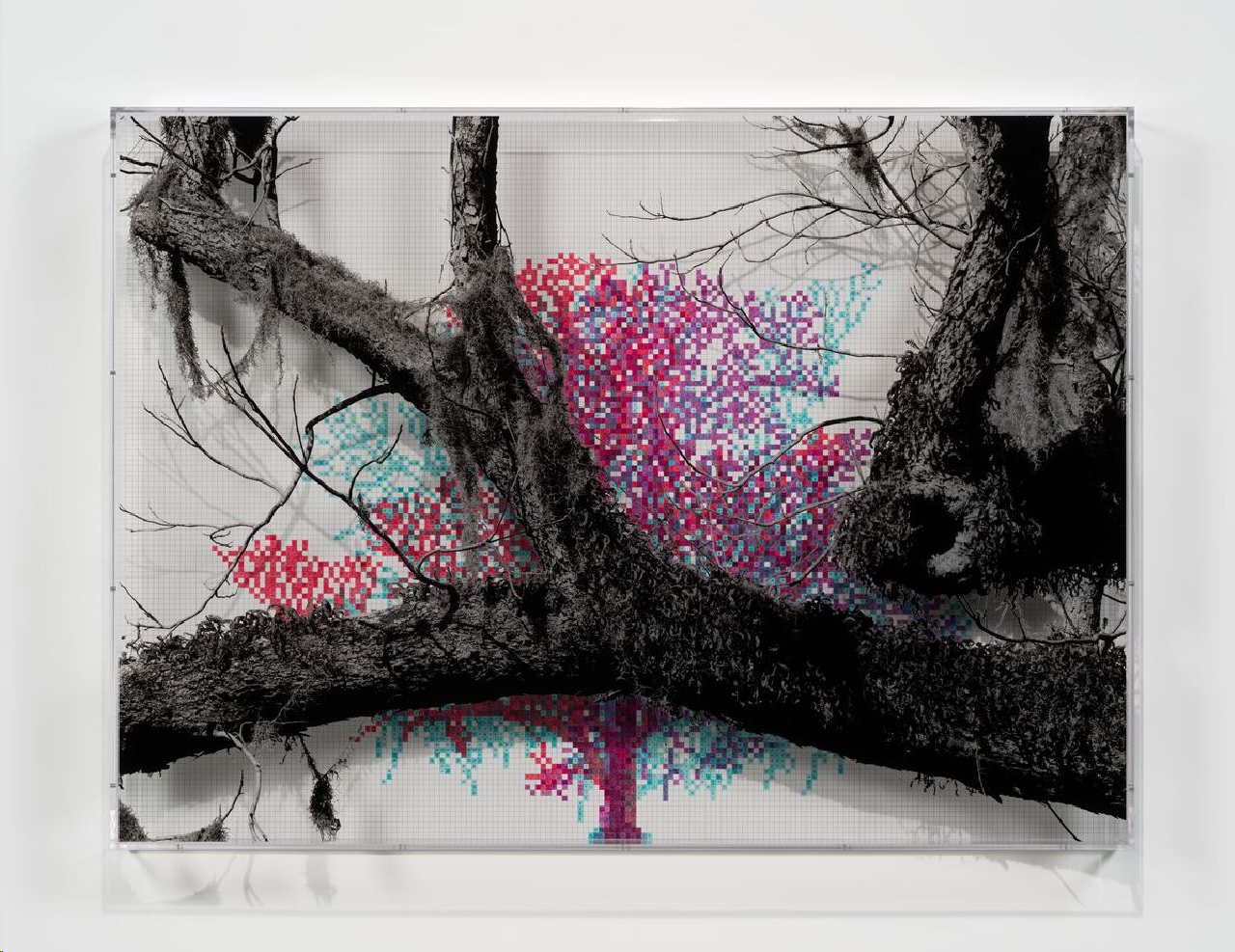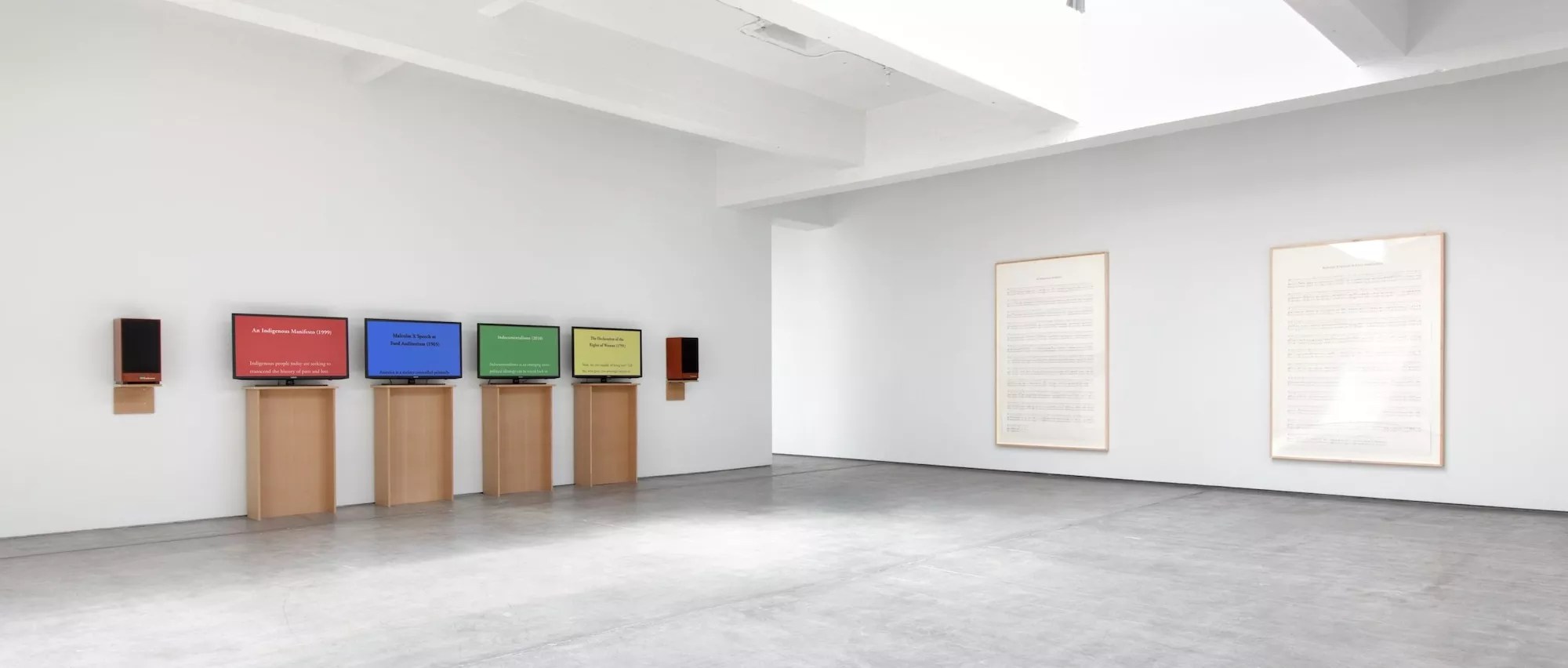
Photo by Fredrik Nilsen, courtesy of the artist and Hauser & Wirth

Audio By Carbonatix
At the Institute of Contemporary Art, Miami, 79-year-old artist Charles Gaines wants to shatter your expectations. In the case of its centerpiece, Falling Rock, that’s taken somewhat literally.
The conceptual artwork does indeed feature an actual rock, which really does fall. But it’s how the rock falls and what it falls upon that makes the difference. It’s suspended from a chain in a vertical glass box above a plate of glass. Every so often, it falls, sometimes stopping just short of the glass, other times breaking it. The timing isn’t random, but it’s irregular enough to seem that way, so when it does drop, the viewer is caught unaware.
“One of the interests was this idea of building suspense, this kind of emotional buildup, and how that becomes a moment of manipulation,” says Gean Moreno, a curator at ICA Miami. “You know that this rock is falling, and you know, at one point, it’s gonna smash the glass. But although there’s a pattern to it, it’s not really obvious to you as a viewer.”
Falling Rock, for instance, is Gaines’ way of showing us how we’re susceptible to manipulation through emotion. We don’t know when the rock will fall, and when it does, we don’t know whether we’ll experience the violence of the pane shattering or the less violent but equally wrenching tease of the escape. It’s a conceptual art game of Russian roulette.
Will you step up to support New Times this year?
At New Times, we’re small and scrappy — and we make the most of every dollar from our supporters. Right now, we’re $17,000 away from reaching our December 31 goal of $30,000. If you’ve ever learned something new, stayed informed, or felt more connected because of New Times, now’s the time to give back.

Charles Gaines’ Manifestos 2, 2013
Photo courtesy of the artist and Hauser & Wirth
Gaines has made a career out of presenting art that tries to stimulate our minds and point us toward the ways that systems affect our lives. He was one of the first Black conceptual artists, and questions of race and the politics of liberation figure deeply into his work in unique, sometimes confounding ways.
Several works in the show feature direct allusions to radical figures like Edward Said, the Palestinian intellectual who coined the term “orientalism,” and Franz Fanon, the post-colonial theorist. Others are less immediate.
In his Night/Crimes series, Gaines juxtaposes three unrelated images: a crime scene, a mugshot, and an image of the night sky. A viewer might wonder what these images have to do with each other, but the goal is a deeper realization: to question how they’ve been put together – why would one associate them in the first place? And is there someone out there who wants that mental link to be made for the person in the mugshot to be linked with the crime?
“When people talk about Charles [and] the politics in the work, I think they often think of the source material, like the Black Panthers or Franz Fanon,” says Moreno. “And that’s true; he might be bound to those politics. But I think the real politics of the work are kind of reminding viewers that they have this critical capacity, that they live in relation to all these categories that organize their social life. And [that] they actually have a critical capacity to question them.”

Charles Gaines’ Faces 1: Identity Politics, #10, Edward Said, 2018
Photo courtesy of the artist and Hauser & Wirth
Some of the works in the show don’t require such detailed questioning to appreciate. In his Numbers and Trees series, a subset of his famous “gridwork” paintings, he juxtaposes images of trees with densely colored, numbered grids.
The paintings are eye-popping in their own right, with the brilliant colors of the grids forming the silhouettes of other trees as if the data is a part of the forest. But, like with Gaines’ other work, there’s always something more going on behind the surface.
Moreno hopes visitors will try to access that by taking their time with the show and thinking about the questions these artworks are asking.
“I think there’s a deeper level to engage in, and it takes a little bit [of] slowing down. So hopefully, we can generate the conditions for that slowing down a little bit and let things dawn.”
– Douglas Markowitz, ArtburstMiami.com
“Charles Gaines: 1992-2023.” On view through March 17, 2024, at the Institute of Contemporary Art, Miami, 61 NE 41st St., Miami; 305-901-5272; icamiami.org. Admission is free.